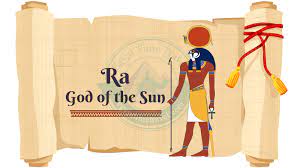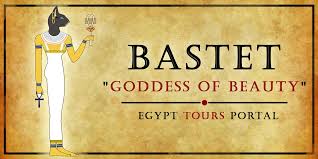The gods of Egypt were among the biggest and most intricate of any ancient culture. There have been hundreds of gods and gods worshiped throughout Egyptian history. Identifying the traits of specific gods might be challenging. The majority have a basic shape and relationship (such as with the sun or the underworld). However, these can alter through time as gods become more important, their value declines, and they shift in ways that are congruent with changes in Egyptian culture. The most significant deities to be aware of are listed below.
Osiris:

Osiris was the deity of the underworld and one of Egypt’s most revered deities. It also represented the cycle of Nile floods that Egypt relied on for agricultural productivity, as well as death, rebirth, and death.
The Egyptian ruler Osiris was said to have been murdered and mutilated by his brother Seth. God Horus was born into their family when his wife Isis put his body back together and gave it new life. He was shown as a mummified ruler, dressed in wrappings that exposed just the green skin on his hands and face.
Horus

The sky deity Horus, who was connected with war and hunting, was sometimes shown as a falcon or as a man with a falcon’s head. Additionally, it represented divine monarchy, and at times, the ruling monarch was seen as a manifestation of Horus.
The son of Isis and Osiris who was miraculously conceived after Osiris was killed by his brother Seth, according to the Osiris tale, was Horus. Horus was raised to avenge the murder of his father. According to one legend, Horus battled Seth and lost his left eye, but the god Thorth miraculously repaired it. Horus’ right and left eyes are connected to the sun and moon, respectively.
Seth:

Seth was the deity of chaos, bloodshed, deserts and storms. He is the assassin of Osiris according to the Osiris mythos (in some copies of the legend, he tricks Osiris into lying in a coffin and then closes it).
For Egyptologists, Seth’s appearance is problematic. It’s frequently shown as an animal or as a person with an animal head. However, they are unable to identify the animal that they should be. Typically, it has a long snout and long ears with square tips. It features a narrow, canine-like body in its full animal form, as well as a straight tail with a strand at the tip. According to many experts nowadays, Seth is a sort of synthetic chemical and there is no such animal at all.
Ptah:

The head of a trio of Memphis-worshipped deities was on hand. The goddess with the wet lion’s head, Petah’s wife, and the god Nefertim, who might have been the couple’s son, make up the other two members of the triad. It appears that Ptah’s first connections were with builders and craftspeople. The fourth family’s architect was dedicated as Petah’s son after his passing. Scientists have hypothesised that Hwt-Ka-Ptah, the name of one of Ptah’s shrines, may have originated as a perversion of the Greek term Aiguptos, the origin of the name Egypt.
Re:

One of the many sun-related deities, Rey was typically depicted as having a human body and a falcon’s head. He believed that every day, he travelled through the sky in a boat, and that every night, he passed through the underworld, where he had to subdue the serpent deity Abubis in order to emerge again. The Ri sect was founded in New Egypt, which is currently a Cairo neighbourhood. Ri eventually coordinated with other sun gods, particularly Amon.
Hathor:

Goddess Hathur was usually portrayed as a cow, a woman with a cow’s head, or as a woman with a cow’s ears. Hathor embodied motherhood and fertility, and was thought to protect women during childbirth. She also had an important funeral aspect, known as the “Lady of the West.” (The graves were generally built on the west bank of the Nile River). In some traditions, sunset was welcomed every night; Living people hope to be welcomed into the afterlife in the same way.
Anubis:

Anubis had a fascination in funeral customs and afterlife care. Typically, he was shown as a jackal or as a man wearing a jackal’s head. The Egyptians would have seen shelters looking for cemeteries, which may have led to the jackal’s link with death and funerals. Before Osiris became the ruler of the underworld in the ancient kingdom (about 2575–2130 BC), Anubis was regarded as the main deity of the dead. The dead king’s body was embalmed and wrapped by Anubis, who thereafter became the patron god of mummifiers, according to the Osiris tale.
Thoth:

A sacred machete, a monkey, or a person with Abu Mengel’s head are all representations of Thoth, the deity of writing and wisdom. He was believed to have created the hieroglyphic script and language, as well as acting as a writer and gods’ advisor. As a god of intelligence, Thor is rumoured to know spells and mysteries that other gods are not privy to. Thorth was portrayed as weighing the hearts of the departed and communicating the verdict to Osiris, the god of the dead, in underworld scenes depicting the verdict of the deceased after their death.
Bastet:

The cat goddess Bastit was once shown as a female with a lion or wild cat’s head. In the first century BC, domestic cats evolved into their less vicious form. She was frequently shown in later times as a seated cat with a royal aspect and perhaps with rings in her ears or nose. It was connected to the Greek goddess Artemis, the moon goddess and divine hunter, during the Ptolemaic dynasty.
Amon:

Amon was first worshipped locally in the southern city of Thebes, before assuming a more significant role at the national level during the New Kingdom (c. 1539–1292 BCE). Amon, who was a god of the air, was given the name “Hidden One,” most likely. He was typically shown as a man with a crown on his head that had two vertical plumes. The ram and the goose represented him as an animal.
Amon was given credit for the victory when the kings of Thebes overthrew the foreign Hyksos dynasty and restored local Egyptian sovereignty across Egypt. He was the most powerful deity in Egypt when his form with the sun god Re was combined, and he held that status for the majority of the New Kingdom.

